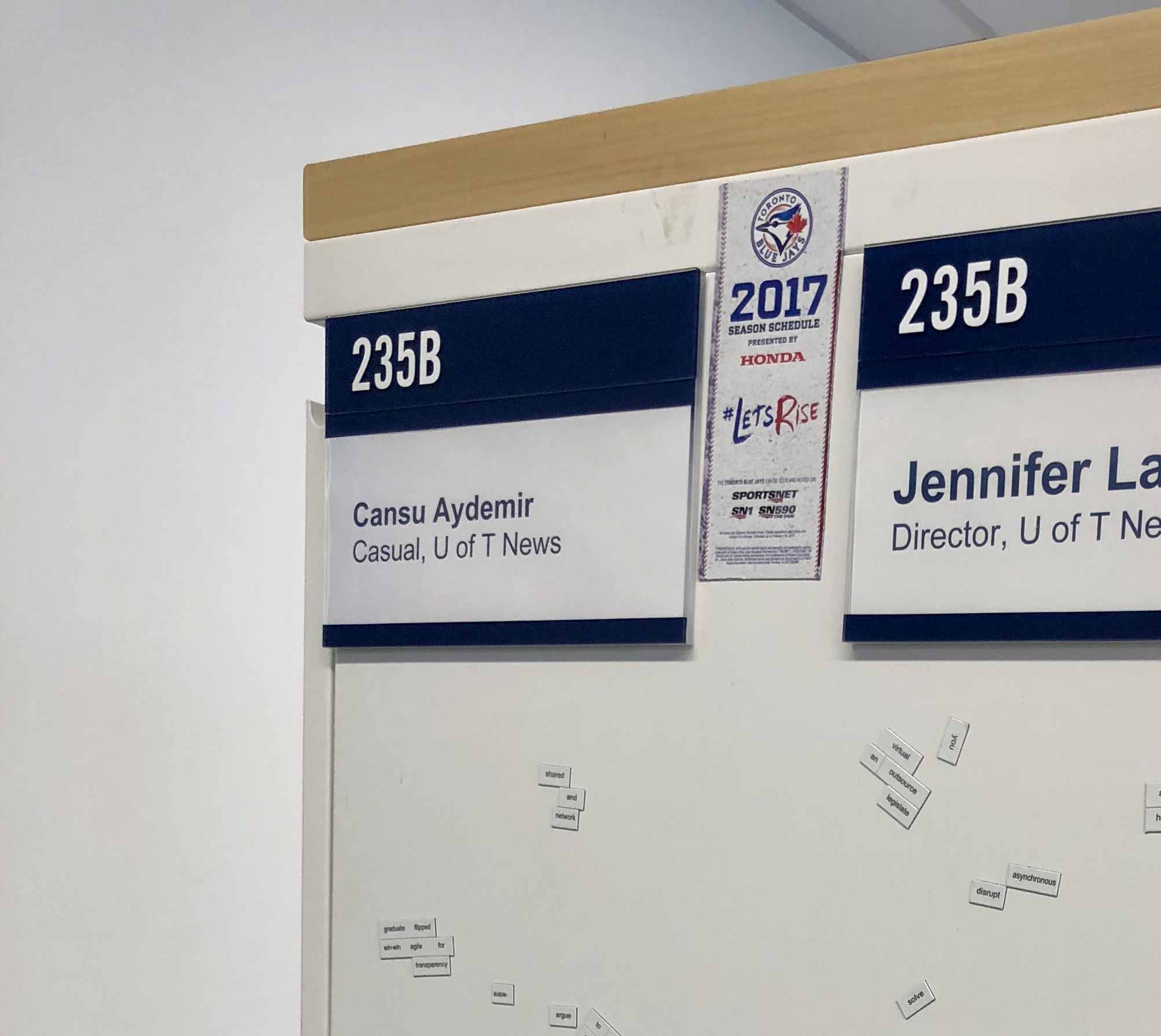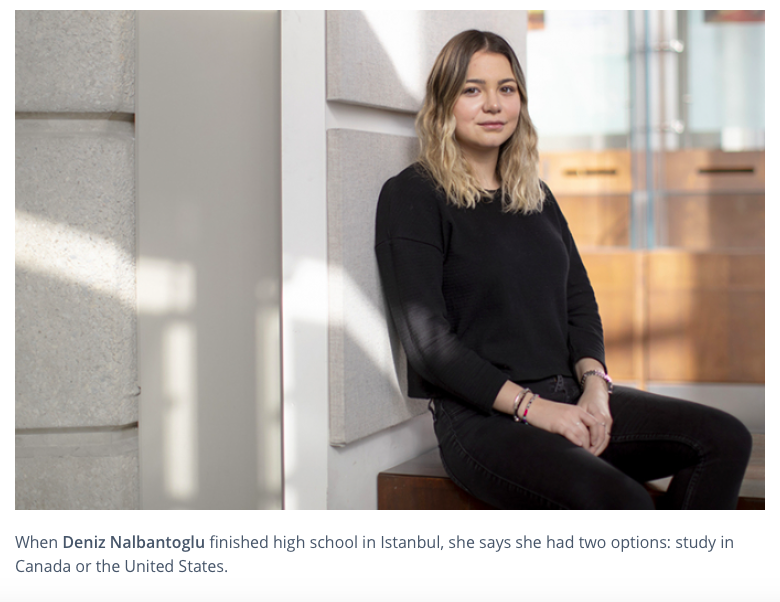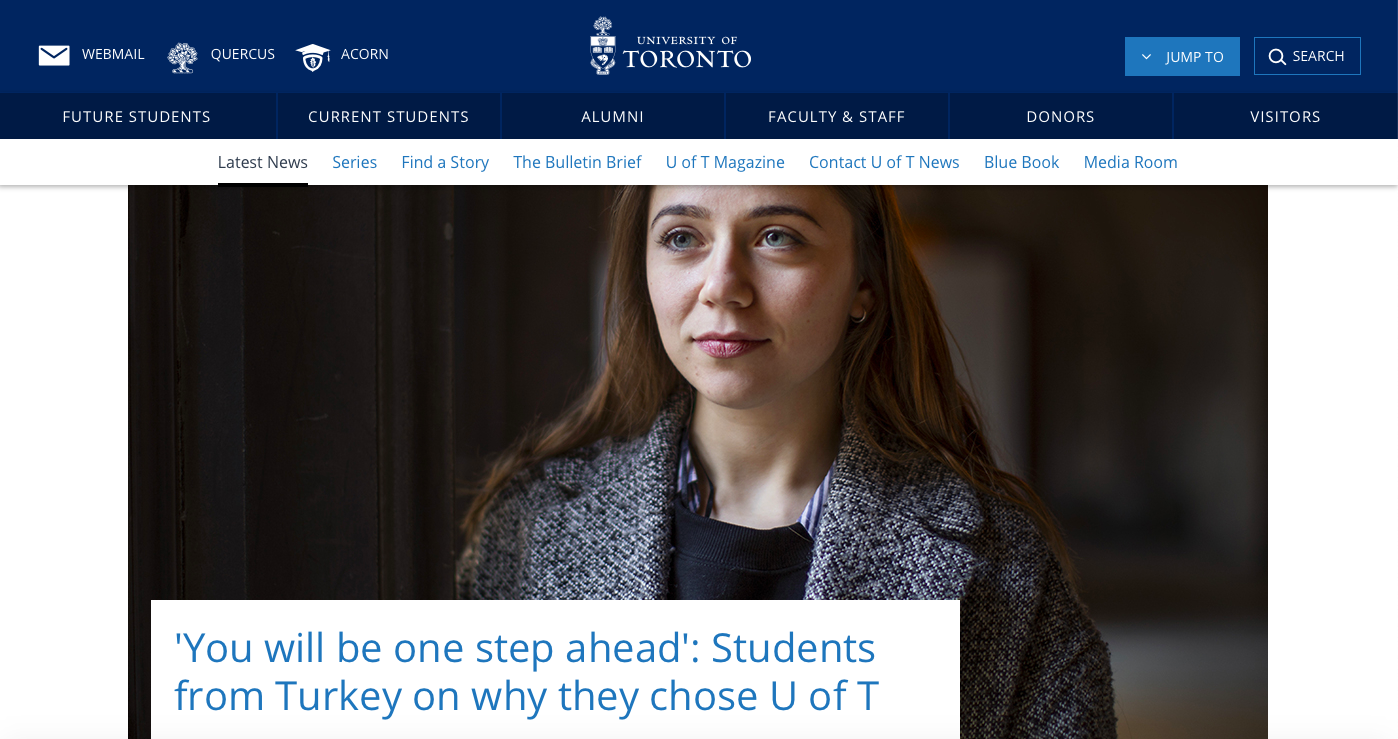By Cansu Aydemir
Published on: January 28th, 2019
Hello! As you already know, I am working with U of T News and I am creating stories on international students at U of T for my first project. In this blog-post I’d like to share the process- starting from how I find the students to how I made short stories out of the things that I gather from the interviews.

photo credit: Cansu Aydemir, U of T Newsroom
1. Finding the right candidates
There are roughly 19 thousand international students at U of T. At the beginning -of course- finding students from different backgrounds might seem easy. But, trust me, it is not. First of all, I ask around to find the right candidates; in short, I use my own social network. If that doesn’t work, I use the internet, check the old news stories on U of T News to find students who would be a right fit. My last option is the social media- I simply find the student clubs – (like Turkish Students Association) and track people from there.

photo credit: https://www.utoronto.ca/news/you-will-be-one-step-ahead-students-turkey-... (A student whom I found through my social network)
2. Contacting with the students
I have a draft email in which I explain my work and the project in detail. I send that email to every student I find. I get approximately 10 percent turnout from the emails. The one thing that I realized during that process is- people do not send emails to say no (not very nice). Another not so nice thing is, sometimes they do agree to do the interview and they don’t show up (not nice at all). Let’s move on with all the positivity- the students, who do respond, are usually very excited to be a part of the project and we do set a date for the interviews.
3. The interview
I talked about the questions that I ask students in my last blog-post. That’s why I won’t be giving too many details about the interviewing process. However, I just want to mention that interviews are the best part of the job. It is really nice to meet new people and talk about their experiences. Since I am one of them- as an international student- I, too, can relate most of the things that they’ve been went through. I always record the interviews to get better quotes for the stories- and that recordings lead to most boring part of the job- transcription.
4. Writing the story
For each story, I interview with 5 or 6 students. That means at least 5 transcriptions for each story. After the transcriptions, the fun part begins. I pick the parts that I like most- catchy and/or interesting parts- and write the story accordingly. I use as many direct quotes as possible, because I feel like it is better to give the interviewee’s voice to the audience. I usually spend a day or two for transcription, story writing and proof reading(s) (too many proof-readings).
These steps are the ones that I am responsible for. At the very end, I send my piece for editing and contact students to introduce them with the photographer. I complete the whole process for one story approximately in two weeks. Like every other job around the world, it has its own difficulties, but at the end, the job gives you the satisfaction of creating something.
My latest story was published last week. To check it out click here.

